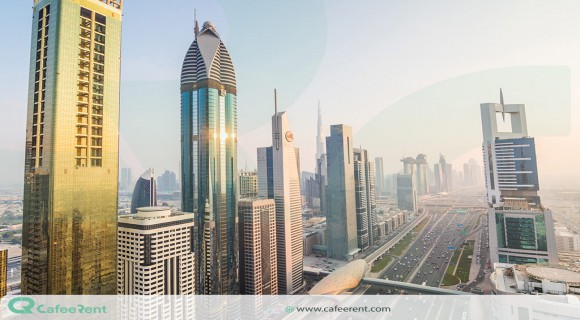Hormuz island; the persian gulf rainbow island

My favorite location in Iran is Hormuz Island due of its magnificent scenery and distinctive culture. In addition to being one of the most intact islands in Iran, it is one of the most vibrant and magical islands in the entire globe.
You'll adore the variety of hues seen in nature on this small island. You will see a variety of red, yellow, ochre, orange, green, white, brown, beige, gold, grey, and turquoise colors as you go about. This is the reason the island is also known as Iran's Rainbow Island.
On the island, life is really interesting. On Hormuz Island, the locals only utilize tuk-tuks (rickshaws) and motorbikes to get around. They cook on the island's red soil.
The history of the island
Several stone artifacts found on the island's eastern shorelines are the earliest signs of human habitation. An raised marine pleistocene terrace known as chand-derakht is where a lithic scatter was discovered.
This location, which dates back more than 40,000 years, produced a middle paleolithic lithic assemblage that was identified using levallois techniques.
Portugal's king Manuel I oversaw the establishment of an expansionist agenda in western Asia and Africa in 1505.
The island was taken by the Portuguese duke Afonso de Albuquerque in 1507 as part of efforts to extend Portuguese authority into the Indian Ocean, and it was then added to the larger Portuguese kingdom.
To ward off prospective attackers, the Portuguese built a fort on the island, which they called the Fort of Our Lady of the Conception. Portuguese ships heading to Goa, Gujarat, and neighboring Kishm used the island as an emergency halt.
Under the command of the commander and cartographer Piri Reis, the Ottomans besieged the island in 1552. At the order of the English East India Company, a joint anglo-persian force took the island from the Portuguese in 1622.
Shah Abbas mistrusted the locals and had no interest in keeping the island active as a military outpost or commerce hub; instead, he invested in developing the nearby mainland port of Bandar Abbas. Hormuz saw a deterioration.
Only fishermen lived there permanently; the majority of its residents traveled to their fields and orchards in the area of the old hormuz on the mainland annually.
Rock salt and chunks of iron oxide, which were used as ballast stones for sailing ships, were still being exported in tiny amounts from the island.
It remained a thinly populated fishermen's island after a period of omani rule in the 19th century before seeing some development in the latter years of the 20th century.
What is the language and culture of hormuz island residents?

Over the years, the island has seen alteration. It was referred to by the ancient Greeks as organa and by the Muslims as jarun.
From the significant harbor town of hormuz on the mainland, its name was changed to "hormuz." Marco Polo traveled by land to the island in 1290 and wrote about his experience in his travelogue. Ibn Battuta afterwards traveled to the island and New Hormuz.
During the ming dynasty's naval expeditions in the 15th century, a Chinese fleet commanded by Zheng He made many trips to Hormuz.
The island was conquered by the Portuguese in 1507, and they added it to their larger empire. To ward off future invaders, they built a fort on the island, which they called the Fort of Our Lady of the Conception.
As a result, Portuguese ships heading to Goa and Gujarat had to make an emergency stay on the island. At the order of the English East India Company, a joint anglo-persian force finally took the island from the Portuguese in 1622.
Shah Abbas did not have faith in the island's natives during the Safavid dynasty. Later, he transformed the adjoining mainland port of Bander Abbas into a major trading hub.
As a result, the hormuz started to dwindle during that time, and many of its residents relocated seasonally to their fields and orchards nearby.
It remained a thinly populated fishermen's island following a period of omani rule in the 19th century. Later in the 20th century, it underwent some development.
Hormuz Island is one of the islands in the southern portion of the country that receives the most visitors nowadays, particularly in the fall and winter when the weather is favorable.
5 best places to visit on hormuz island
Here we are going to introduce 5 of the best places on Hormuz Island to you, so stay with us.
1- red beach, hormuz island

Some publications call this beach "the blood beach" and the nearby water "the crimson sea." My friends questioned me about the color of the ocean at Red Beach after seeing my images from that trip.
Simply put, it's due of the red soil's high iron oxide content. Additionally, the sea's waves take on a pink hue when the sand in the water is particularly red.
One of the world's most distinctive beaches is this one. This is the reason I included it on my bucket list for the Middle East: 50 top destinations in the Middle East
2- silver beach, hormuz island
Red Beach and Silver Beach are next to each other.
One of the most unique beaches I've ever seen was this one. Its sand is incredibly bright and sparkling, and it is covered in beautiful stones. You now know why Hormuz Island is also known as Rainbow Island, I believe.
3- soiled carpet, hormuz island
Hormuz Island is home to the largest dirt carpet in the world, which was created there using 90 different shades of soil. It was already extremely old and faded when I was there. So that wasn't really that interesting.
4- portugese castle, hormuz island
This is a stronghold that the Portuguese left behind during colonial times in the 16th century. I've never seen a fortification like this one before. It's just that the stones that were utilized to construct this stronghold became a little crimson as well.
300,000 IRR is the entrance charge for the Portuguese fortress.
5- nadalian museum, hormuz island
The owner of this magnificent museum is Ahmad Nadalian. In order to make some money, he is training local women how to paint and then selling their creations.
What & where to eat on hormuz island

Here we are going to talk about the best food on Hormuz Island for you, so stay with us.
1- seafood with the red soil
The crimson dirt from the island of Hormuz was one of the most intriguing foods I have consumed. We might claim that the soil on the island is the most significant spice.
For instance, one of the most crucial elements in seafood recipes is the soil from the island of Hormuz.
However, there is something even more intriguing than that.
2- local bread with the read soil of hormuz island
Let me demonstrate to you how to make tomshi, a delightful thin and crispy bread. The island's crimson soil is represented by the tiny red spots. You'll need dough, eggs, cheese, the soil from the island, and fish sauce to prepare this bread.
As a side note, the red soil of Hormuz Island is used for dyeing, glass, pottery, and cosmetics in addition to seasoning food.
3- fish stew aka ghalieh mahi
Malieh Ghalieh In Qeshm, Bushehr, and Bandar Abbas of Qeshm-hormuz, Hormozgan, and Bushehr, the main course is something to eat.
Persian Hot Shrimp or fish Most well-known stew in southern Iran (Hormozgan and other cities of southern Iran). Due to their proximity to the Persian Gulf, the southern provinces are particularly fond of fish, a delectable and high-protein diet. Fish stew called "ghalieh mahi" is cooked with rice and herbs.
4- falafel
The simplest cuisine to obtain on Hormuz Island is falafel. Falafel is a popular dish to eat in Khuzestan's Ahvaz and Abadan. Peas should be soaked in water for several hours, or until the bloating is resolved and soft, in order to create falafel.
The nuts should only be lightly smashed as you continue. After crushing, combine the ingredients with the parsley, garlic, and grated onion. Make a smooth dough with your ingredients by adding some chickpea flour and a few eggs. Just put on your goggles and start frying now.
Hormoz island food
You might have been astonished to learn that hormuz's red dirt can be eaten after hearing this speak. If you've heard this statement before, we must confirm that it's accurate and that you may taste and eat the red soil on the beach in this area.
We must stress that you should not be concerned about consuming this dirt because, even if you do not taste it directly, you will consume it in the regional cuisine. The locals refer to this soil as galak, and it is present in many of the local spices.
The locals utilize this soil to bake bread and cook fish as well as to make pickles, jams, and sauces that give their meals a unique flavor. Suragh is a well-known dish from this area that is prepared with these unique spices and is quite excellent.
It's intriguing to learn that this lovely island's soil comes in a variety of colors in addition to red, which is another marvel of the place. Other soil hues on this island, including white, gold, and silver, give it a unique appearance.
But if you're wondering where these colors come from, we'll have to tell you that they are all the products of chemical composition and are a combination of several minerals that contain iron oxide. Has it.
Pyrite, a golden metal stone with abundant iron sulfide that is known to people as the "gold of idiots" or "the eyes of the devil," is one of the stones discovered in this region.
Conclusion
The city of Bandar Abbas leads to the crimson beach on Hormuz Island. To get to Shahid Haqqani Pier, you could take a rail or a rented car. Additionally, quay boats and ferries are available from Bandar Abbas to qeshm Island and hormuz Island, respectively.
Between 7 and 11 a.m., ferries depart from Bandar Abbas. To 8:30 p.m. after two to three hours. It costs about 70,000 irr and takes about 40 minutes.
However, ships from Qeshm Island start sailing at 7 a.m. And 2 p.m. 50 minutes and 90,000 irr are required. Finally, you can easily visit this beautiful island and enjoy all its beautiful spots by visiting https://cafeerent.com/tourism site with a car rental.







Add Comment